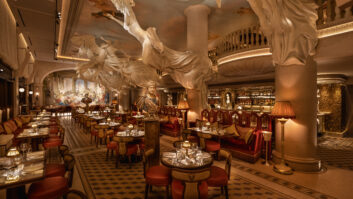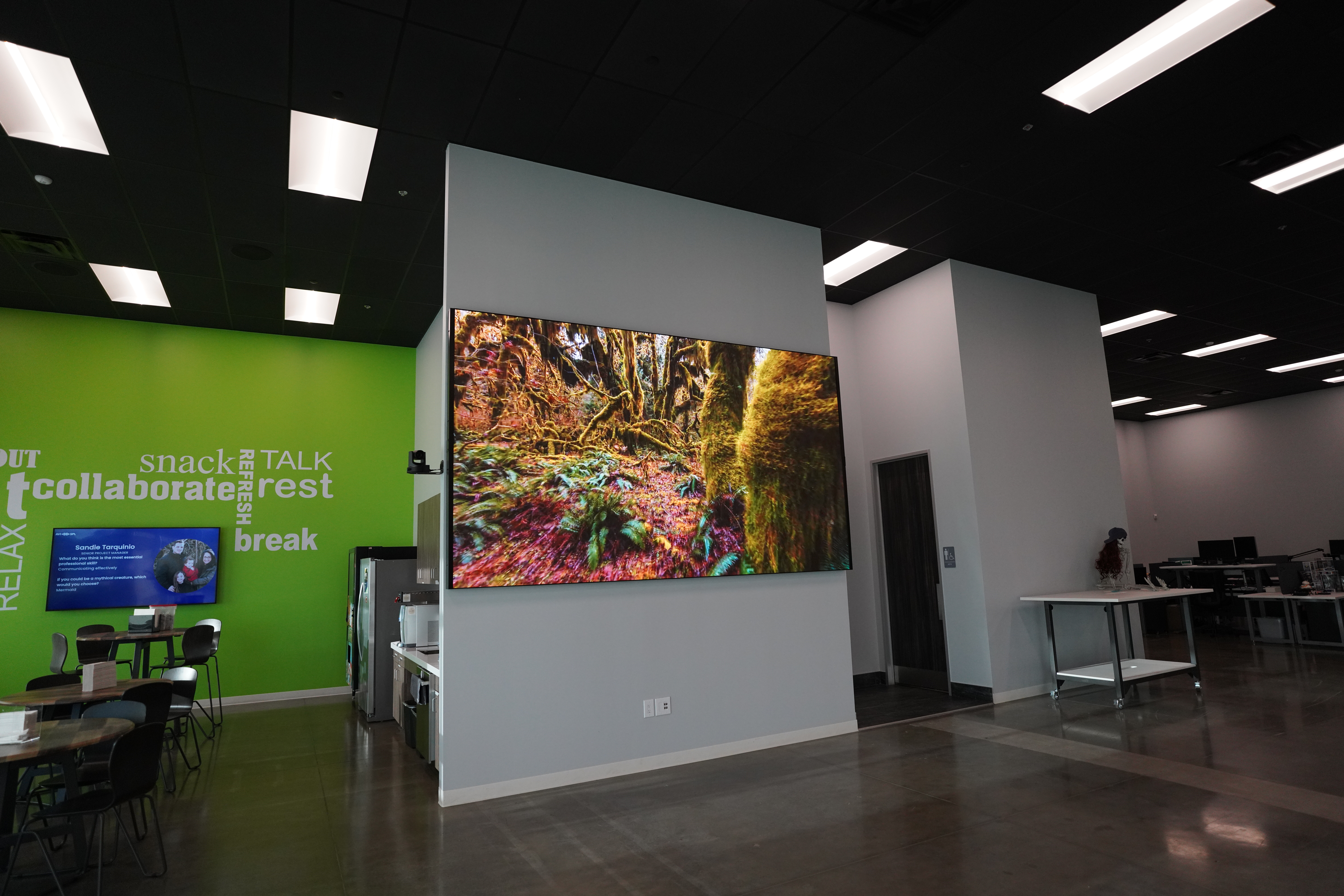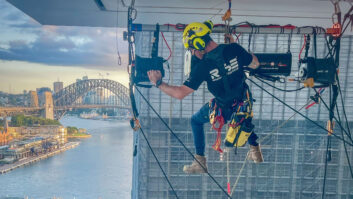 Video walls have historically been as much a status symbol as a solution: they are an AV system design “statement piece” that signals technological advancement, a culture of excellence, and a taste for luxury in environments ranging from corporate offices and universities to high-end retail and sportsbooks. However, as the underlying technology has improved and the prices of panels have decreased, video walls are becoming increasingly common in mid-market applications. Restaurants, sports bars, and lobbies that might once have relied on projection or – to be frank – wildly undersized displays for the viewing area can now credibly opt to install a video wall showpiece of their own.
Video walls have historically been as much a status symbol as a solution: they are an AV system design “statement piece” that signals technological advancement, a culture of excellence, and a taste for luxury in environments ranging from corporate offices and universities to high-end retail and sportsbooks. However, as the underlying technology has improved and the prices of panels have decreased, video walls are becoming increasingly common in mid-market applications. Restaurants, sports bars, and lobbies that might once have relied on projection or – to be frank – wildly undersized displays for the viewing area can now credibly opt to install a video wall showpiece of their own.
In many contexts, video walls are strongly preferable to projection for large-format display. You don’t have to worry about obstructions or ambient light; the viewing area is wider; and you can achieve far greater image clarity, with higher contrast and richer colours. They do, however, entail a host of unique hardware considerations. If you’re considering adding video walls to your solution portfolio as an alternative to projection, here are some of the key hardware considerations to keep in mind:
There is no “best” option for video wall display technology: LEDs and LCDs are both great in the right contexts. LCD displays are cheaper, but they limit your farthest viewer distance. In smaller spaces, they’re an excellent option. LED technology can allow you to build massive, bezel-less video walls in custom shapes, but the cost per square inch of display is generally higher than that of LCD. In either case, you will want to specify commercial-grade panels, specifically designed for video wall use; otherwise, you will face challenges when it comes to delivering and displaying content and servicing the solution.
WALL CONTROLLERS
A video wall controller manages how content is displayed across the panels that make up your video wall. Some displays come with a basic controller built-in, but you may still need to specify separate hardware components for more flexibility. The controller takes the source (or sources) and divides it into separate signals for each display. With a dedicated controller, you can integrate a control system, scale your images, and incorporate source switching or multi-view modes.
Mounting:
When mounting a video wall, you must consider how the devices will be serviced in the future. A regular fixed display mount might work in the short term but may cause issues later in the system’s lifespan. A purpose-built video wall mount will allow you to make more precise horizontal and vertical adjustments to align displays, and many also offer spring-loaded extensions for easier servicing.
Cabling:
Video walls often require both very high resolutions and long cable runs, as it’s often not feasible to locate the source(s) close to the displays. You have a range of mature extension technologies to choose from in order to overcome these challenges, including Cat cable extensions (e.g., HDBaseT) and fibre extenders. In most SMB applications, a Cat cable extender will provide sufficient distance and excellent bend radius at a low cost. In larger venues or venues with a lot of EMI interference, however, you may need to opt for fibre solutions.
Designing a stunning video wall centrepiece to fit a mid-market budget requires careful attention to detail and a thorough understanding of the various components that make up the system. By making informed decisions about the available technologies and components, and considering the specific needs of each project, you can deliver a tailored solution that enhances the overall user experience while adhering to budget constraints. Ultimately, a well-designed video wall not only serves as a statement piece that captures the attention of viewers but also stands as a testament to the integrator’s expertise in creating an immersive and engaging visual experience.







